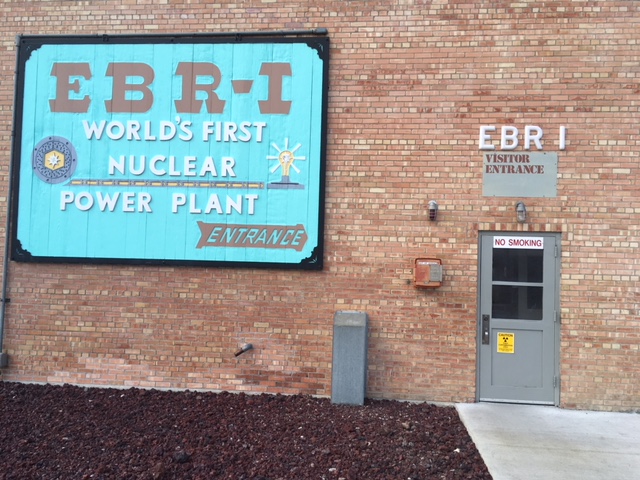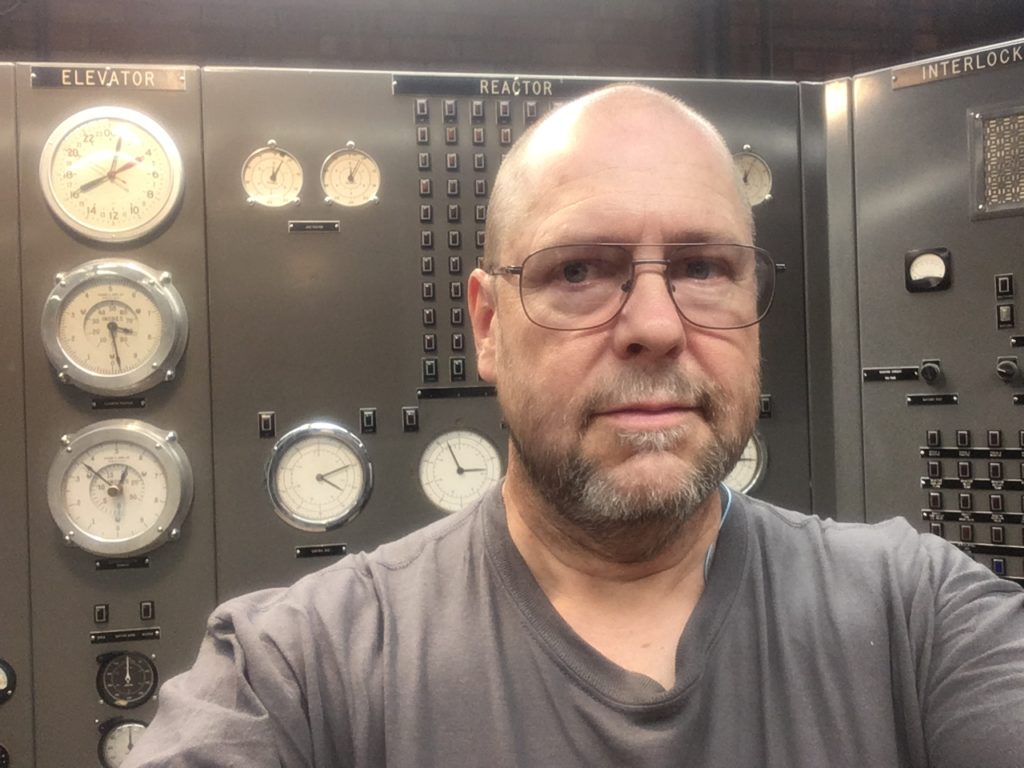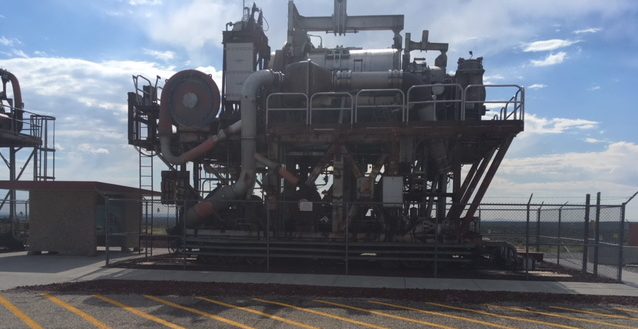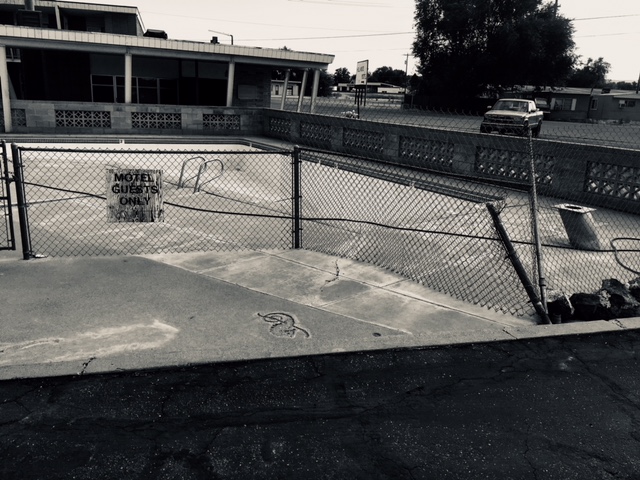This is one of a series of blog posts about my summer motorcycle travels.
My former student Howard arrived up from Texas (He’s my riding buddy who went with me to the Yukon and Alaska two years ago) on the evening of Day 3, and on Day 4 we resumed traveling west. This was Science Day for Ralph and Howard.
Our first stop was at EBR-1: Experimental Breeder Reactor 1 – the first atomic power plant. It was primarily a research reactor, but the research included how to generate electricity by splitting atoms. The reactor produced enough electricity to run the plant – A first.

EBR 1 – Experimental Breeder Reactor 1, near Arco, Idaho.
It was a place Bishop Matt had recommended, and it was fascinating. It was of special interest to me, given that my dad is a retired nuclear physicist who came of age as a scientist as this reactor was going online back in 1951. What, you say your father didn’t talk to you over the dinner table about the challenges of liquid sodium cooled nuclear reactors? Well, mine did.

Would you let this man run a vintage nuclear reactor? Didn’t think sol.
One of the scariest exhibits there were a pair of experimental reactors designed to test whether it was practical to have an atomic powered jet airplane. Fortunately cooler heads prevailed, and the project was scrapped.

Experimental reactor tested to see if it was practical to build an atomic powered jet plane.
The second stop was at Craters of the Moon National Monument and Preserve, a place I have dreamed of going from the day I first heard of it. Apollo astronaut Buzz Aldrin referred the actual moon as a “magnificent desolation,” and those words could be used to describe this huge, 2000-year-old volcanic lava field.

Riding buddy Howard checking out the lava field at Craters of the Moon National Monument.
While we spent quite a bit of time investigating the lava flows, cones and splatter cones, we did not go into the caves. Had we done so, we would have to certify to the ranger that we had not been in a cave or coal mine wearing these same clothes any time since 2006. Why? To keep the White Nosed Bat fungus from spreading into the bat colony there.
WNB fungus was an innocuous European species, but when it was accidentally brought to the United States, North American bats had no natural resistance to it. The fungus, which gives the bats a white nose (duh!), and acts essentially like cold. The bats have trouble breathing, it wakes them up from their winter hibernation, and then the poor little bats die of exposure. In some areas, more than 90 percent of the bats have killed by it. (If you really want to scare yourself, read the book The Sixth Extinction by Elizabeth Kolbert that tells the whole story of White Nosed Bat Syndrome and a host of other potential extinctions caused by invasive species.)
We ended the day in Mountain Home, Idaho. It was ok, but our motel was not the finest place we’ve ever stayed…

Not the world’s finest motel.
